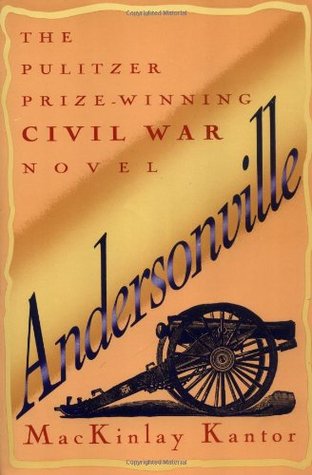
Andersonville ~ A Capsule Book Review by Allen Kopp
Andersonville, Mackinlay Kantor’s Pulitzer Prize novel, was first published in 1955. Though it is fiction, it is based largely on historical record, diaries, letters, witness accounts, etc. (At the end of the novel is a lengthy list of sources that the writer used.) Some of the characters in the book are real people, while others are fictional constructs.
The prison camp, Andersonville, was so-named because the nearest train station was the small town of Anderson. The camp was built in the state of Georgia by the Confederate Government of the Southern States to contain prisoners of war from the Northern States in the bloody conflict known as the War of the Southern Rebellion or the War Between the States.
The camp (also called the stockade) was ill-conceived, hastily built and inadequate in every way. As soon as it was opened to accept prisoners, it was poorly managed and inhumane. It was simply an enclosed area of about 27 acres with 15-foot walls, containing over thirty thousand prisoners of war (it was intended to hold half that many). There was no real shelter for the prisoners other than what they were able to devise on their own. They used old coats, quilts, parts of tents, or whatever they had on hand or could scrounge, to keep themselves out of the rain, the cold or the blazing Georgia sun. They were given barely enough food to sustain life and the food was of the poorest quality, not suitable for human consumption. No latrine or toilet facilities were provided, so there were over thirty thousand men using the swamp to relieve themselves. If the men got sick—and most of them did—they had no medicine and no treatment. Scurvy and malnutrition were rampant, as were diarrhea and a condition known as dropsy. Due to the filthy and unsanitary conditions, a small sore or an insect bite could turn into gangrene, and in just a few days the victim would be mortally ill. Worst of all, the military brass responsible for the running of the prison were callous and uncaring, if not downright cruel. The prevailing notion was that Yankees deserved to suffer and die because they were the enemy and were less than human.
The fictional plantation owner, Ira Claffey, and his family, represent the civilian view of Andersonville prison camp. Ira Claffey is a character we rarely see in fiction, a kind and benevolent slave owner who feeds his slaves well, takes care of their needs, and is concerned for their happiness and welfare. But the Claffeys pay a heavy price for the war, as so many people did; they lose three sons in battle and the mother, Ira Claffey’s wife, dies of grief.
There are other memorable characters, both inside and outside the prison. The Reverend Cato Dillard and his wife, Effie, take Christianity seriously and put it into practice whenever they can. Captain Henry Wirz is the Swiss-born officer who serves as the commandant of Andersonville. He is in constant pain from a war injury and seems temperamentally unsuited to his post. Providing much-needed comic relief is the widow Tebbs, a prostitute who conducts a thriving business in an outbuilding near her home that she calls “the crib,” and her brood of mismatched bastards (Coral, Floral, Zoral and Laurel), each with a different father. Coral is an embittered 18-year-old who returns home from battle minus a leg. Floral, a not-very-bright 14-year-old, longs to be a guard at the prison.
Andersonville is a long novel, 726 dense pages (a lot of words per page). It’s not difficult to read, except for its length. I wasn’t exactly getting tired of it before I finished it, but I was glad when I came to the end. If you have the time and determination to read it, you will find it a rewarding experience, not soon to be forgotten.
Copyright © 2021 by Allen Kopp
